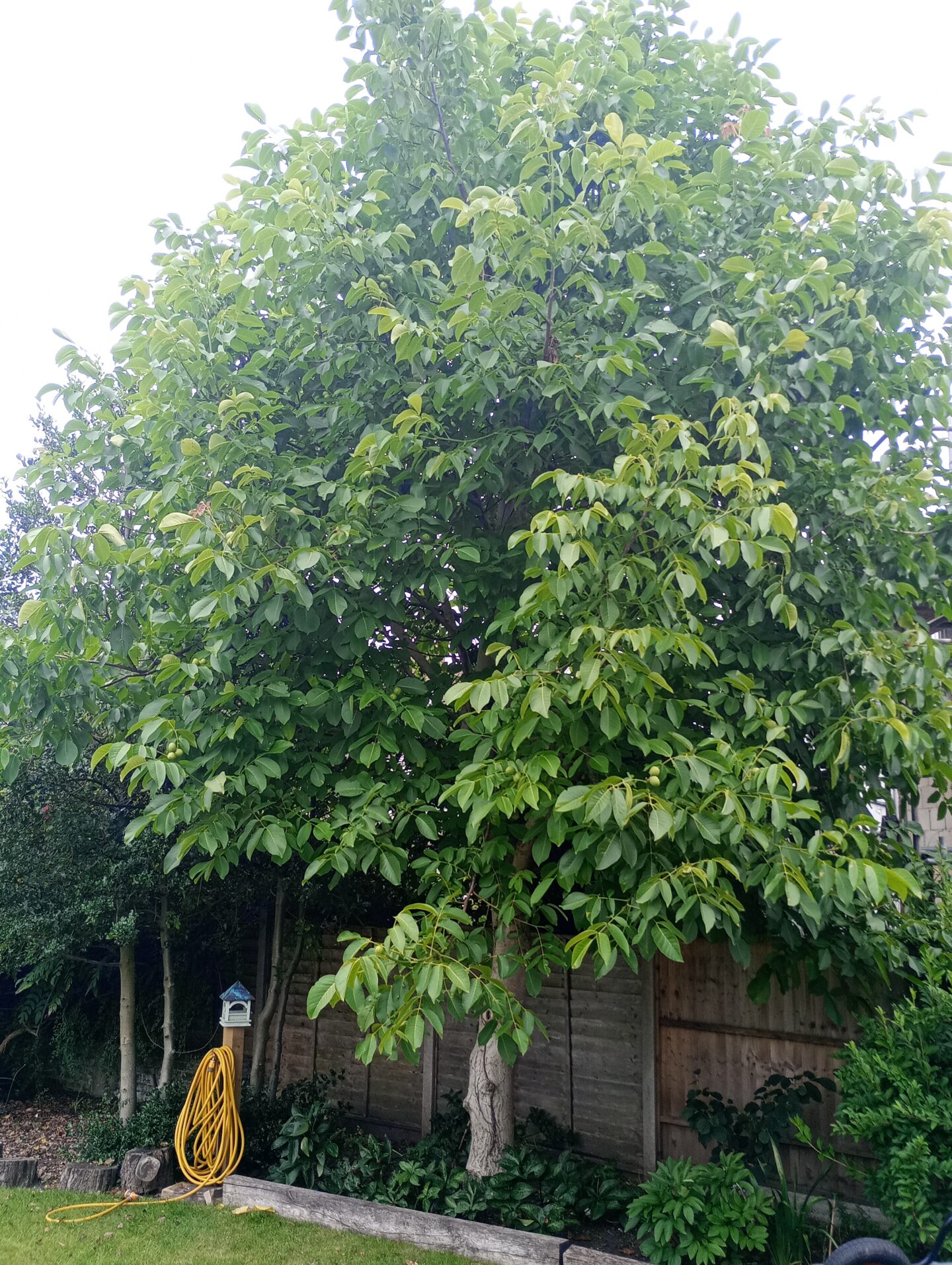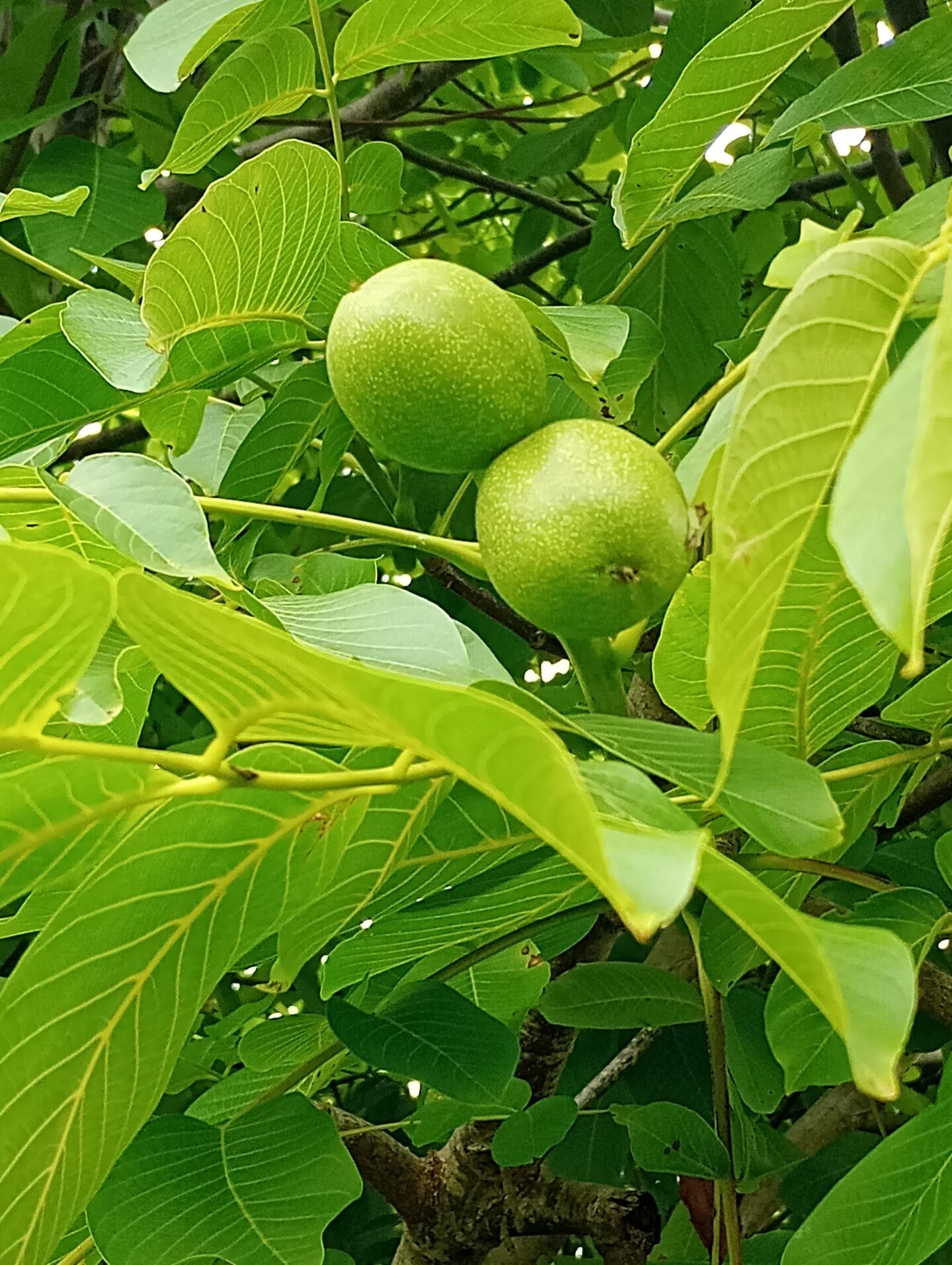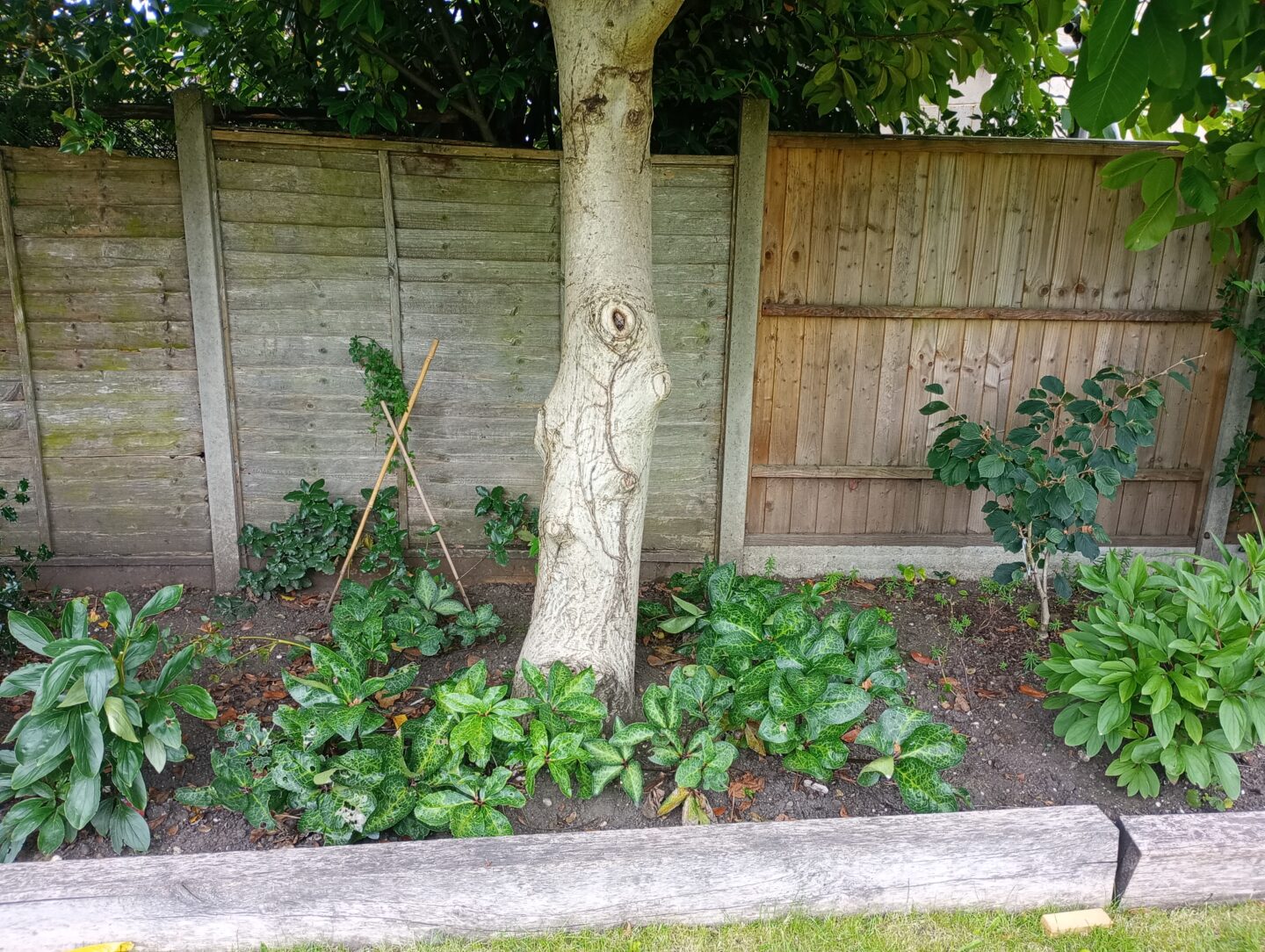
The walnut tree is in full leaf, and already showing signs of walnut leaf gall mite (I’ve linked to the RHS page explaining this in more detail). We have lived here six years and have seen this on the tree every year. As the RHS says, it seems to cause no harm to the tree or the walnuts other than making the leaves look more unsightly.

The walnuts themselves are growing well. It has been unseasonably wet and cool in Greater London for months now but there is no discernible difference in the growth or health of the tree and nuts this year compared with previous years. I am considering netting one or two limbs this year to see if we can get any sort of harvest from them rather than the squirrels getting them all, but who knows if that will be successful. We also have some hazel hedging which is abundant this year, so I may try to cover some of that also.

The overall shape of the tree is looking really rather nice. I do sometimes wonder if we ought to thin further or remove it as it casts significant shade on the neighbour’s garden. However, we moved into our respective homes at the same time when the tree was already of similar size and it provides a great deal of privacy between our houses/gardens. And I never like to take down trees that are providing habitat or food for wildlife (or people!)

There is a lot of information online about being unable to grow anything much beneath a walnut due to the presence of a chemical called juglone released by the walnut tree into the surrounding soil. However, from doing a bit of research, this is mostly based on the Black Walnut, which produces significantly higher quantities of juglone than the common or English Walnut. As you can see from the photo, we are having good success with growing a variety of plants that tolerate/enjoy being planted beneath a deciduous tree including hellebores, cyclamen coum, a witch hazel (this is planted just outside the canopy line to accommodate its eventual size), a garrya elliptica and, to take advantage of the fact that border is south facing, we have planted some peonies at the very front which get more sun than the plants further back. We call it the winter border as it has a large mahonia and several holly trees, as well as a mature forsythia, all of which give interest throughout winter and before the main growing season kicks off. The additional planting continues this and the walnut itself provides good structure and colour from its silvery grey bark during the winter months.

I hope you’ve enjoyed catching up with the walnut in July. I hope to see you in August for another little update.
